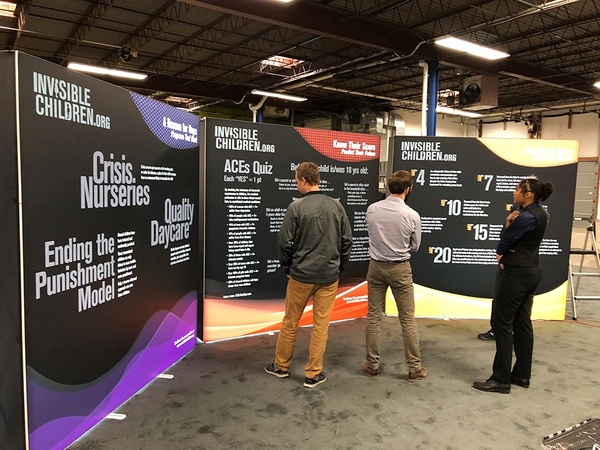Current literature reporting included below
What to do when a six year old climbs out the window of your kindergarten classroom threatening to jump three stories to the concrete below?
What do you say to a seven year old girl …with scarred arms that is obviously cutting herself repeatedly with a knife or razor?
Kendrea (6) and Gabriel (7) successfully hung themselves a few years ago. They came from different states but suffered the same afflictions.
Only one out a hundred very young children are successful in their suicide attempts as it is not easy to do.
Traumatized by rape and torture in their birth homes and forced onto mind numbing Prozac like drugs in foster care (court orders). Kendrea lived close to me. Gabriel wrote very articulately about killing himself because he despised being forced onto Prozac like drugs.
One of my CASA Guardian ad Litem case kids was tied to a bed, beaten starved and raped (repeatedly over four years) after he was returned to his biological father. The last time I remember crying (about 10 years ago) was when that boy told me about his plan to suicide by cop.
This boy had tried multiple times to kill himself as my case child. What’s it like to be that cop? What’s it like to be that teacher, social worker or guardian ad Litem?
Child suicide attempts, cutting and a dozen other forms of self-harm are almost never known outside of child protection.
With almost no public reporting or transparency, very few people ever know about how hard state ward children exhibit self-hate, practice self-harm and try to kill themselves.
Child abuse lasts forever – this suicide note explains it pretty well.
Eric, John, Mary & thousands of children just like them have been and are being raped, beaten and tortured every month.
KARA has followed and reported their stories HERE since the early 2000’s.
Childhood & Adolescent Suicide & Abuse: In Current Literature
The National Poison Data System, researchers found more than 1.6 million cases of 10- to 24-year-olds attempting to kill themselves by poisoning from 2000 to 2018. More than 70% of the suicide attempts by poisoning were in young women.
U.S. youth emergency psychiatric hospitalizations and suicide attempts are escalating at alarming rates.
Among children between the ages of 5 and 17, annual emergency department encounters for suicidal ideations and attempts have more than doubled from 2008 (0.66%) to 2015 (1.82%)7. That equates to an increase of 35,266 encounters for SI or SA during the period of 2008-11 to 80,590 encounters from 2012-2015.
Adolescents who had more than one suicide attempt prior to their initial hospitalization were 102% more likely to be re-hospitalized within 5 years for a suicide attempt than adolescents who had no prior attempts2.
Both study’s findings lend credibility to criticisms of the current adolescent rehabilitation and suicide prevention programs, stressing the disconnect present in the understanding of recurrent adolescent, suicidal behavior in the United States.
Investigating the role of protective social factors in targeting the early signs of suicidal behavior in our youth and helping them manage suicidal tendencies is a worthwhile strategy to pursue.
These protective factors can range from building strong, supportive social relationships with friends or family to developing beneficial coping mechanisms that include activities which reduce suicidal tendencies.
Enhancing the social support for the at-risk, suicidal youth serves as an inexpensive, non-intrusive strategy to help mitigate suicidal ideations and suicide attempts in our youth.
Behavioral therapies in conjunction with responsibly-prescribed medications may serve as an effective preventative strategy to help kids-at-risk for suicide.
Effectively addressing suicide requires a combination of engaged communities, schools, health centers, and families to communicate ideas, implement solutions, and share results with others. The seasonality of suicide in children is a phenomenon that warrants attention. There was a spike in suicidal ideations and attempts that started in September and extended through November among children 5-17, which is consistent with the start of school8.
Building public support for policies and programs that work is critical if we are to make progress reducing suicide in children.
Youth Suicide and Child Abuse
Suicidal ideations are influenced by traumatic physical, emotional, or sexual abuse.
Children are especially emotionally vulnerable to traumatic experiences that can lead to risky behaviors later in life.
In a 2018 national study by McMahon et al., found that childhood maltreatment was significantly associated with an increased risk of violent tendencies such as, suicide attempts and self-injury.
Childhood sexual abuse was the strongest predictor of self-injury and suicide attempts.
Sexual abuse experienced early on in childhood development results in neurobiological changes in responses to stress and increased susceptibility to averse environmental influences3.
A strong body of evidence supports this theory suggesting serious, lifelong psychiatric abnormality.
These physiological changes have been linked to mood and anxiety disorders4-5. Finally, a 2018 meta-analysis of 47 studies concluded that there was consistent association between childhood sexual abuse and the increased risk of suicide attempts.
For children who have experienced sexual abuse, the estimated odds of a suicide attempt are 1.93 times the estimated odds of a child who has not experienced sexual abuse6.
Subjects from a nationally representative, longitudinal study on child and adolescent well-being were used in the analysis of suicidal ideations among children in out-of-home placements (children removed from home or living in a foster home, a group home, or kinship care). Youth placed in group homes were 7.25 times more likely to have suicidal ideations compared to those in kinship care (p<0.01). This may have been explained by the fact that youth placed in a group home were 4.6 times more likely to have clinically significant depressive symptoms compared to those in kinship care9.
1 in 5 Queer Young Adults Attempted Suicide in America last year – add to that those that thought about it.
Economic Impacts of Youth Suicide
Although the economic considerations of suicide are always ancillary to the health/emotional concerns associated with suicidal behavior, it is appropriate to consider the mounting healthcare costs that burden families with children who have been treated for a suicide attempt or ideation.
Hospitalizations are by far the largest expense intensifying a family’s economic burden in receiving care for their child. In 2010, the average cost of a hospitalization for patients between the ages of 1 and 17 neared $8,2007. This is concerning given the drastic increase in inpatient hospitalizations among children’s hospital’s in the US for suicidal encounters.
During the period of 2008-2011, there were 21,512 inpatient hospitalizations for a suicidal ideation or attempt in kids between the ages of 1-17. This number more than doubled during the period of 2012-2015 to 46,0761.
Frequent re-hospitalizations for one family can result in catastrophic financial strain on top of devastating emotional tribulation. Separately, the national expenses of suicide are substantial and illustrate how costly suicide is for the nation.
In 2013 the average cost per suicide for kids between the ages of 5-14 and adolescents/young adults between the ages of 15-24 were $1,795,378 and $2,012,476, respectively7. The cost per suicide for kids between 15-24 was the highest compared to all other age groups. Based on the escalating numbers of childhood suicidal encounters in the US, these dollar amounts have unquestionably increased.
In closing, thorough investigation into the various risk factors, outcomes, interventions, therapies, costs, and attitudes associated with childhood suicide has led me to conclude that effectively combating suicide in kids will be a challenging, if not impossible, feat to overcome. Sadly, predicting and addressing childhood suicidal behaviors is becoming increasingly complex as social dynamics among the youth continuously evolve, tasking clinicians, therapists, and parents to quickly recognize how these dynamics impact their children’s emotional state—especially those that may be most destructive.
The advent of social media poses another obstacle in preventing early, risky behaviors and has enabled children the freedom to explore topics, many age-inappropriate, without supervision. If interpreted without regulation/control, children are susceptible to aberrant ideas that can become risk factors for dangerous behaviors.
Social media has also enhanced idea sharing across people, so this poses another challenge for parents to control who their child is communicating with.
Lastly, there have been campaigns, landmark legislation, and increased awareness to child abuse.
However, cases of childhood abuse are still ubiquitous in the United States, so continued action and mobilization from policy makers, communities, and law enforcement in combatting this unfortunate reality is warranted.
Childhood trauma can last forever and be a primary driver of self-harm and suicidal tendencies later in life.
More of us need to care about this before change can happen.
“What we do to our children, they will do to our society” (PLINY the Elder 2000 years ago)
Thank you Alex Carsel for your research and diligent efforts for this article.
KARA has been reporting and speaking on critical issues impacting abused and neglected children for many years.
this article submitted by long time CASA guardian ad Litem Mike Tikkanen
Please share this with teachers, law enforcement and social workers in your circles
- Shepard DS, Gurewich D, Lwin AK, Reed GA, Silverman MM. Suicide and Suicidal Attempts in the United States: Costs and Policy Implications. Suicide and Life-Threatening Behavior. 2015;46(3):352-362.
- Steele IH, Thrower N, Noroian P, Saleh FM. Understanding Suicide Across the Lifespan: A United States Perspective of Suicide Risk Factors, Assessment & Management. Journal of Forensic Sciences. 2017;63(1):162-171.
- Yurtoğlu N. http://www.historystudies.net/...ani20181092a4a8f.pdf. History Studies International Journal of History. 2018;10(7):241-264.
- Heim C, Shugart M, Craighead EW, Nemeroff C. Neurobiological and psychiatric consequences of child abuse and neglect. Developmental Psychobiology. 2010;52(7):671-690.
- Heim C, Newport JD, Mletzko T, Miller AH, Nemeroff CB. The link between childhood trauma and depression: Insights from HPA axis studies in humans. Psychoneuroendocrinology. 2008;33:693-710.
- Ng QX, Yong BZJ, Ho CYX, Lim DY, Yeo W-S. Early life sexual abuse is associated with increased suicide attempts: An update meta-analysis. Journal of Psychiatric Research. 2018;99:129-141.
.
- Pfuntner A, Weir LM, Steiner C. Costs for Hospital Stays in the United States, 2010. Statistical Brief #146. https://www.hcup-us.ahrq.gov/r...statbriefs/sb146.jsp. Published January 2013. Accessed April 5, 2019.
- Piemmons G, Hall M, Doupnik S, et al. Hospitalization for Suicide Ideation or Attempt: 2008–2015. Pediatrics. 2018;141(6).
- Carbone JT, Holzer KJ, Vaughn MG. Child and Adolescent Suicidal Ideation and Suicide Attempts: Evidence from the Healthcare Cost and Utilization Project. The Journal of Pediatrics. 2019;206:225-231.
- Anderson HD. Suicide ideation, depressive symptoms, and out-of-home placement among youth in the U.S. child welfare system. Journal of Clinical Child & Adolescent Psychology. 2012;40(6):790-796.






Comments (1)